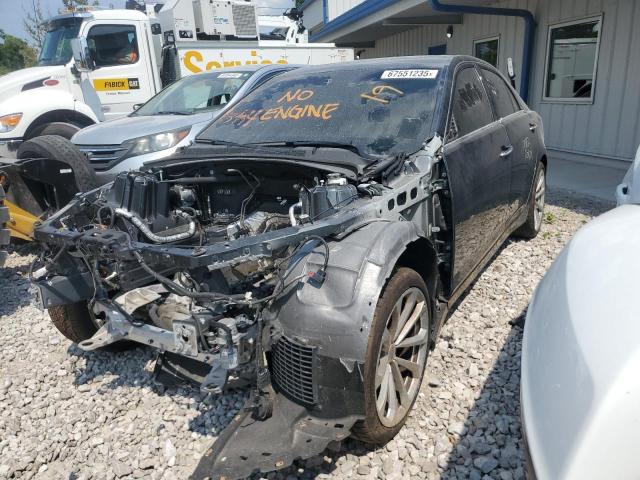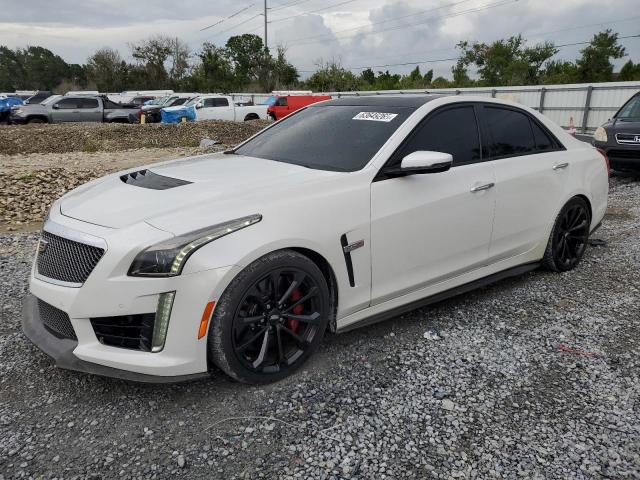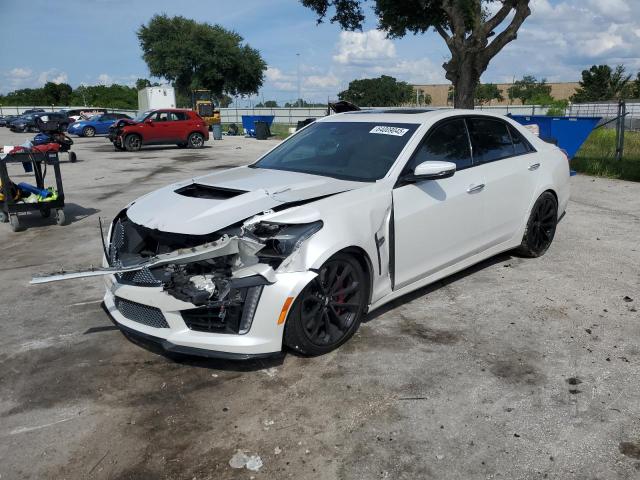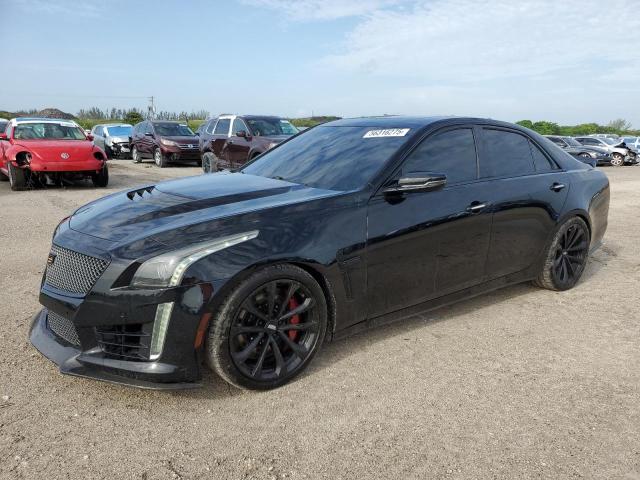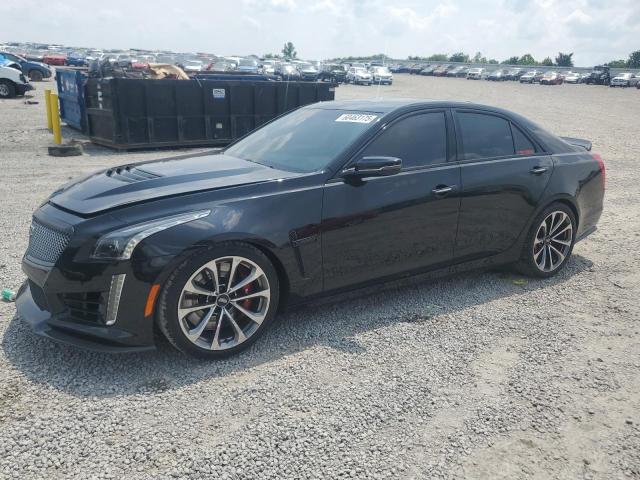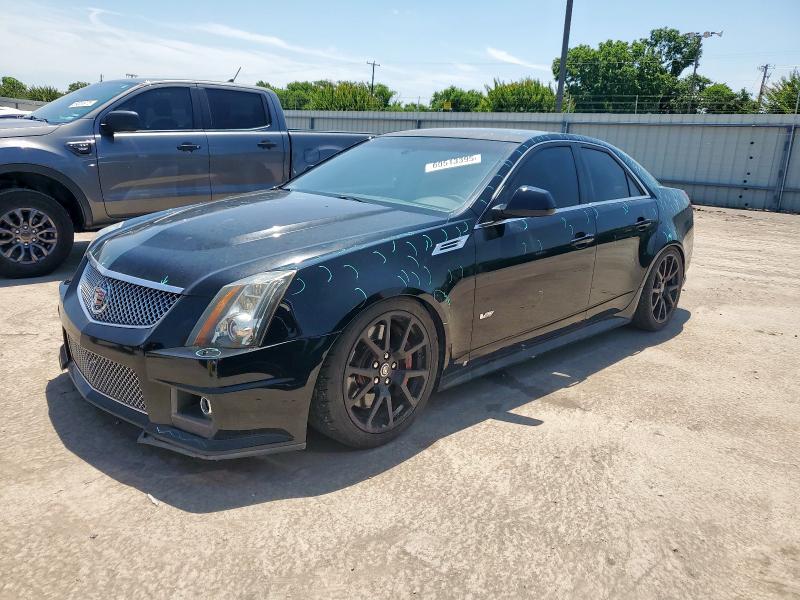2018 CADILLAC CTS | 1G6A15S68J0156811
Lot details
- Sale Date2025-05-19
- Lot Number38373654
- ACV56000 $
- Sale documentSalvage (Maryland)
- LocationDream Rides (IL)
- Odometer38,310 miles (61,654 km)
- Primary DamageFRONT END
- Secondary DamageLEFT SIDE
Vehicle specifications
5
~$86,000
Engine: 6.2L Supercharged V8
Torque: 855 Nm
0–100 km/h: ~3.6 s
The third-generation Cadillac CTS reached its zenith in the CTS-V, a super sedan engineered to take on the world’s fastest four-doors. With its Corvette Z06–sourced LT4 V8, advanced Magnetic Ride Control, performance traction management, and reinforced chassis, the CTS-V delivered blistering straight-line speed and track-worthy composure. Brembo brakes, an electronic limited-slip differential, and aggressive aero design made it not just a fast Cadillac — but one of the fastest sedans in history at the time.
Even below the CTS-V, the Vsport trim offered a serious performance package with its twin-turbo 3.6L V6, near-perfect weight balance, and refined ride–handling balance. The base CTS trims also benefited from Cadillac’s Alpha II architecture, praised for its rigidity, steering precision, and suspension tuning.
Visually, the CTS lineup embraced sharp, muscular styling with wide tracks, LED accents, and optional performance wheels. Inside, carbon and suede trim, Recaro seats (in V), and customizable drive modes reinforced the car’s dynamic purpose.
Thanks to its supercharged flagship, genuine chassis engineering, and multiple trims with athletic tuning, the CTS (2014–2019) earns its place in a sport-focused database — especially as a rare American alternative to the M5, E63 AMG, and RS6 Avant.
Final Bid Cadillac CTS (2018)
$17,875
$28,118
$43,000
Body Styles
All CTS variants were offered as four-door luxury sedans. The body featured a long hood, sweeping roofline, and athletic rear proportions — aiming directly at the BMW 5 Series and Mercedes E-Class. The Alpha platform gave it near-perfect weight distribution and low curb weight, particularly notable in the V-Sport and CTS-V.
While the standard models wore a clean, upscale look, the CTS-V introduced a vented carbon hood, mesh grille, widened fenders, quad exhausts, and optional carbon aero kit, giving it serious visual aggression and aerodynamic efficiency. Optional packages added carbon ceramic brakes and performance tires.
Model Name Meaning (Manufacturer)
The name CTS in Cadillac CTS stands for "Catera Touring Sedan", a reference that ties the model back to the Cadillac Catera, which was produced from 1996 to 2001. The Catera itself was a rebadged version of the Opel Omega, part of GM’s attempt to appeal to younger, performance-oriented buyers. With the launch of the CTS in 2002 (and continuing through its second generation from 2008 to 2013), Cadillac signaled a shift toward sportier and more European-influenced sedans aimed at rivals like the BMW 5 Series and Mercedes-Benz E-Class.
For the third generation (2014–2019), Cadillac retained the CTS name but significantly repositioned the car as a luxury performance sedan, distancing it even further from the original Catera roots. The naming continuity (CTS) was maintained for brand recognition and to emphasize the model’s evolution, but by this stage, the acronym had largely lost its literal meaning in Cadillac's marketing. Instead, it came to represent Cadillac's flagship rear-wheel-drive sedan built to compete globally.
So while CTS originally meant Catera Touring Sedan, by 2014–2019, it had evolved into more of a legacy badge symbolizing Cadillac's commitment to luxury and driving performance, especially as part of the brand’s "Art and Science" design and engineering philosophy.
Body & Interior Colors and Rims
The third-generation Cadillac CTS offered a sophisticated palette of exterior and interior colors along with a wide array of wheel options, reflecting the brand’s focus on performance, elegance, and personalization.
The body color offerings included a mix of understated metallics and bold premium finishes. Among the most prominent were Crystal White Tricoat, Phantom Gray Metallic, Stellar Black Metallic, and Radiant Silver Metallic, all of which emphasized the CTS’s angular lines and sculpted panels. More expressive choices such as Red Obsession Tintcoat, Dark Adriatic Blue Metallic, and Bronze Dune Metallic catered to buyers looking for a more distinctive appearance. Cadillac also introduced limited-edition shades for specific trims, including Black Raven for a stealthier performance look and Velocity Red or Dark Emerald Frost for high-performance V-Sport and V-Series variants.
Inside, the CTS featured premium interior color combinations that balanced modern luxury with sporting intent. Core themes included Jet Black, Light Platinum with Jet Black Accents, Kona Brown with Jet Black Accents, and Very Light Cashmere with Jet Black Trim. Higher trims like the Premium Luxury and V-Sport Premium Luxury offered semi-aniline leather seating, suede microfiber accents, and open-pore wood or carbon fiber trims, depending on the configuration. Some interior packages were paired exclusively with certain exterior colors to preserve aesthetic harmony.
When it came to wheels, Cadillac gave buyers a broad selection ranging from 17-inch multi-spoke alloy wheels on base models to 19-inch polished, forged aluminum wheels on V-Sport and high-performance variants. Designs varied from elegant split-spoke patterns to aggressive V-style rims with dark-finish pockets, and premium options included ultra-bright machined faces, Midnight Silver finishes, and After Midnight dark aluminum for a more assertive appearance. Certain limited trims, such as the Carbon Black Package, included exclusive darkened rims and gloss-black trim details.
Top Expensive Options
- Carbon Fiber Package (CTS-V): ~$6,000
- Recaro Performance Seats: ~$2,300
- Performance Data Recorder (CTS-V): ~$1,300
- Magnetic Ride Control (std. on V-Sport & CTS-V): included
- Heads-Up Display: ~$1,200
- Bose Surround Audio + Navigation: ~$1,800
- UltraView Sunroof: ~$1,450
- Performance Traction Management System (CTS-V): standard
- Advanced Security + Surround Vision: ~$1,000
- Paint-to-Sample / Premium Colors: ~$1,200+
vs Competitors
The CTS lineup spanned a wide spectrum — from 2.0T executive sedan to track-ready super sedan. Entry-level models rivaled the BMW 528i, Audi A6 2.0T, and Mercedes E300, offering more performance per dollar but less refinement. The V-Sport took aim at Audi S6 and BMW 540i M Sport, with sharper chassis tuning and serious straight-line speed.
The CTS-V competed directly with BMW M5 (F10/F90), Mercedes-AMG E63 (W212), and Audi RS7. It delivered raw power, rear-wheel drive drama, and track-ready hardware like Magnetic Ride and launch control. While interior tech lagged behind German rivals, its chassis, engine, and value were unmatched — especially for American performance enthusiasts.
Fun Fact
The CTS-V used the same 6.2L supercharged V8 (LT4) as the C7 Corvette Z06, making it the most powerful Cadillac ever produced, and the first production Cadillac capable of 200 mph (322 km/h). Despite its luxury badge, it could outrun many Ferraris and Porsches, yet seat five and carry luggage in comfort.


